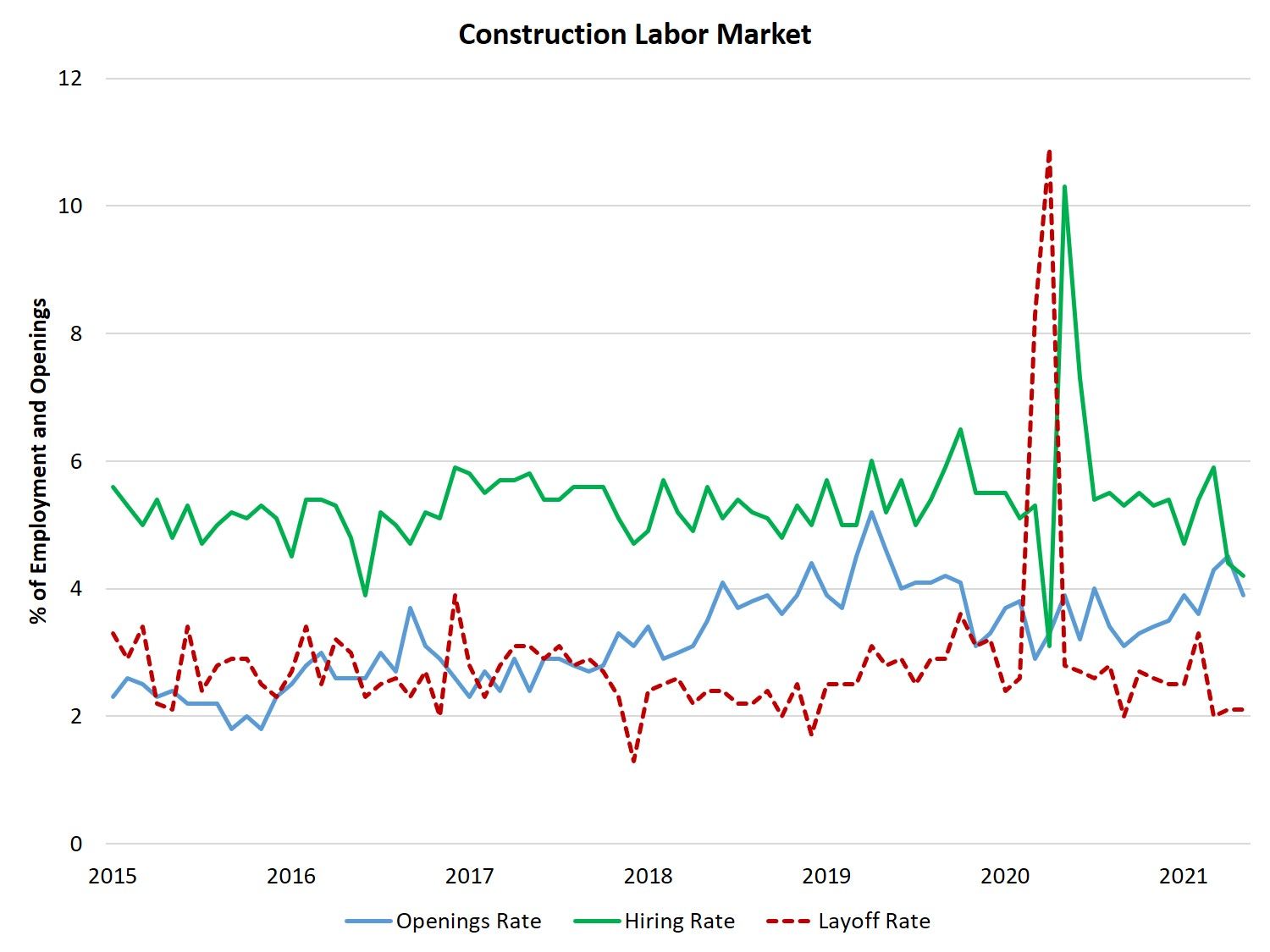Leadership
299K Job Openings Are Builders' Vicious-Circle Challenge
Hiring two people per minute every 8-hour-weekday for the next 300 days may sound like a pipedream, but it could be a strategy. Here's how to start.
So, if builders and their trade partners around the country could and did hire two people or so a minute – that works out to 1,000 people for each 8-hour weekday for the next 12 months – then, in that time period, job sites would have the human-power for which they're modeled to operate at full capacity.
Could and did are the two operative terms that go along with the question of if.
Even if they could, they might not right now in light of the gremlin-filled building products and materials channel, which continues to bedevil all things scheduling when comes to site-level scheduling across many reaches of the construction life-cycle. Hiring headcount, only to have people languish idle on the sidelines due to bottlenecks, allotment shorts, or delayed materials arrivals stands as a non-starter among supervisors already squeezing to make margins as input costs creep or gallup upward.
And even if they might go ahead and make the hires to increase start-to-completion velocity, the longstanding question of whether they could find and recruit and secure the services of two properly-trained and site-tested trades workers per minute remains in doubt.
What's more, while "Quits" among construction payroll workers don't rank with the highest rates of elective separations in other industry sectors, May quits in Construction tallied 160,000, or a rate of 2.1%. When every hand counts, that quit-rate is too meaningfully high as it is.

Mind you, hiring has been happening. Here's National Association of Home Builders chief economist Robert Dietz's take on the latest BLS Job Openings and Labor Turnover Survey (JOLTS) Dietz writes that construction employers have continued to add to their payrolls, although the hire rate is tracking downward as the economy opens and more industry sectors start trying to attract workers.
Th NAHB's Dietz has this color to add to the data release:
Looking forward, the construction job openings rate is likely to experience choppiness in the months ahead given divergent outlooks within the construction industry. For example, in June, residential construction posted a jobs gain, while nonresidential construction experienced a job loss. Nonetheless, attracting skilled labor will remain a key objective for residential and nonresidential construction firms in the coming quarters and will become more challenging as the rest of the economy recovers.
Now, about that ... "attracting skilled labor," out of the mouths of babes comes this stunningly well-articulated case for a societal reframing of at least one aspect of "the future of work."
From USC Annenberg Media journalism school comes fresh young graduate Phil Rosen, unfairly wiser than his years, with a piece entitled "We should advocate for trade schools just as much as college, especially after a pandemic."
Rosen writes:
College is a wonderful experience, but it should not be promoted at the expense of trade schools and skilled labor jobs. A Washington State auditor report found that hiring managers in the skilled labor market cannot find enough employees — even despite generous starting-salaries.
Among other things, the report suggested career guidance for high schoolers and middle schoolers that focused on alternatives to the university path.
Finding a trade or undertaking an apprenticeship can pay dividends when compared to the cost of a four-year degree (and 59% of students take five years to graduate anyway). Most certifications from a trade school cost a fraction of what a single semester may cost at a brand-name university, and they take far less time to acquire.
Further, those with a technical education enjoy a higher chance of employment compared to those with academic training, according to the U.S. Department of Education.
At the very least, these options should be given more consideration than they currently are.
The next time you see a high school student, think twice about asking them what college they plan to attend.
This way, hiring two people a minute every 8-hour-day for the trailing 300 days becomes less a pipedream and more a strategy. Are we ready to go there?


